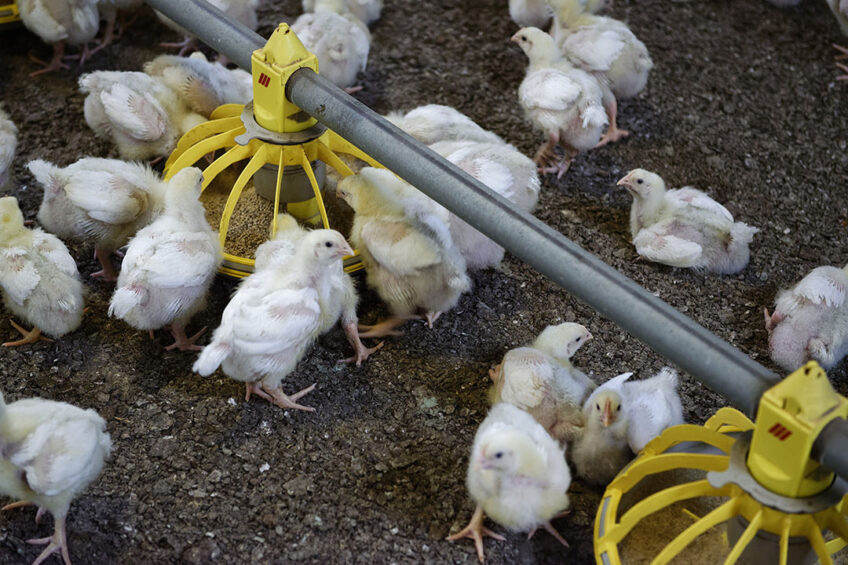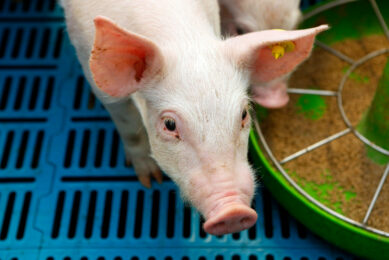Blending organic acids with essential oils to replace AGPs in broilers

In a study recently published in the Poultry Science journal, researchers found beneficial effects of blending encapsulated essential oils and organic acids as an antibiotic growth promoter alternative in broilers with necrotic enteritis.
Antibiotics as an antimicrobial growth promoter (AGP) for poultry have gradually been banned or limited in some countries, because of increasing antimicrobial resistance and drug residues in poultry products. However, in many countries, research data have revealed that the removal of AGPs from poultry feed leads to reduced performance and the frequent occurrence of enteric disorders such as necrotic enteritis (NE), calling for safe and effective alternatives.
Essential oils (EOs) are promising in-feed antibiotic alternatives due to their natural, low toxicity, and no-residue properties. In addition, EOs have antioxidant, anti-inflammatory, antimicrobial, and anti-parasitic properties. Similarly, studies show that organic acids (OAs) exhibit numerous physiological effects, including antimicrobial activity, an anti-stress effect, promotion of gut development, immune modulation, and energy supply for intestinal cells.
The study setup
The researchers evaluated the effects of a blend of encapsulated organic acids (OAs) with essential oils (EOA) as an alternative to antimicrobial growth promoter (AGP) on growth performance and gut health of Eimeria spp./Clostridium perfringens (C. perfringens) in chickens infected with necrotic enteritis (NE) broilers. A total of 432 broilers (1-day-old) were put in 6 treatment groups/diets as follows:
Positive control (PC): uninfected and untreated control
Negative control (NC): infected and untreated control
AGP: the infected birds were fed a basal diet supplemented with 250 mg/kg bacitracin methylene disalicylate plus 90 mg/kg monensin
EOA: the infected birds were fed a basal diet supplemented with 3 levels of the blend (200 mg/kg, 500 mg/kg, and 800 mg/kg).
The blend’s active ingredients were 4% carvacrol, 4% thyme, 0.5% hexanoic, 3.5% benzoic, and 0.5 % butyric acid. The focus was to determine whether EOAs could be used as alternatives to AGPs to improve growth and gut health and control NE infection in broiler chickens.
Improved growth performance
In this study, infected broiler chickens fed with AGP had the highest weight gain and feed intake compared to the other groups. However, the FCR was not significantly different from the positive control and the blend at 200 mg/kg. The FCR value increased with the increase in EOA inclusion levels, but all levels were better than the negative control. It was generally concluded that adding EOAs at 200 mg/kg or 500 mg/kg is beneficial to weight gain and feed efficiency in broiler chickens with necrotic enteritis infection. And the benefits were comparable to using AGPs at the levels included in this study.
Gut microbiota modulation
Necrotic enteritis infection significantly increased the amount of C. perfringens in the liver and caecum compared to non-infected treatment and other infected treatments. Compared with the infected control, infected broiler chickens receiving AGPs or different levels of EOA revealed a considerable decrease in the number of C. perfringens and E. coli in the liver and intestine. Intestinal health was further supported by increased levels of the beneficial bacteria Lactobacillus observed in both the AGP and EOA groups.
Immunity and gut barrier function
Gut lesions and C. perfringens burden in the gut and liver are common parameters used to assess the preventive efficacy of adding various antibiotics alternatives to treat NE infection in chickens.
In this study, necrotic enteritis infection caused gut injury, as indicated by severe gut lesions, increased C. perfringens load in the caecum and liver, decreased villus height/crypt depth, and goblet cell numbers. However, the villus height/crypt depth and the number of goblet cells increased while gut injury decreased by either adding EOAs (200 mg/kg and 500 mg/kg) or the addition of AGP, which had effects similar to those of the non-infected groups. The researchers related a decrease in the level of gut injury to improved gut health and improved growth performance because of the antimicrobial and anti-inflammatory activities of essential oils or organic acids.
The intestinal epithelium and tight junction proteins (TJPs) significantly contribute to maintaining the integrity of the intestinal mucosa barrier, immune hemostasis and intestinal health.
In this study, enhanced goblet cell density and elevated claudin-1 mRNA were observed in the NE-infected chickens given different doses of EOA, indicating that EOA could alleviate intestinal barrier damage caused by NE. A low proportion of proteobacteria in the EOA group compared to the AGP group indicated that the EOA blend could reduce intestinal inflammation and improve gut health more than by administering AGP.
Conclusion
The researchers concluded that feeding a blend of essential oils and organic acids at an appropriate dose could alleviate necrotic enteritis-induced gut impairment and growth depression and modulate caecal microbiota composition, demonstrating its potential as an antimicrobial alternative. In this study, a blend at an inclusion level of either 200 or 500 mg/kg was beneficial compared to supplementation with antibiotics. The researchers emphasised the importance of considering all the factors that could affect the efficacy of EOA products such as the structure of EOs or OAs, EOA formula composition, EOA coating and dosage, chicken health status, dietary form and composition, and rearing conditions.











